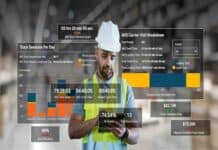
By Nivedha Sridhar
Popularly considered laggards when compared to the pace at which other industries are transforming using CMMS, the built world is facing its watershed moment. A number of compelling factors—starting from the climate crises to the pandemic and now a looming recession—have acted as a wake-up call for real estate operators.
We are seeing three clear themes emerging in commercial real estate—O&M teams are realizing the value of doing more with less; providing a seamless and world-class tenant experience is a top priority; and gaining visibility into building performance using data is important.
Each stakeholder in the life of a building has priorities. But these priorities are now changing. While tenants/customers once wanted cheap office space and glamorous facilities, now they prioritize health, safety, hybrid-friendly, and sustainable spaces. Building owners now want more from their buildings too—they want access to generational data, visibility into the granular as well as big picture, and value for money.
This shift in priorities has changed the role of O&M teams—they no longer are tactical task owners but need to become value drivers playing a more strategic role in the building portfolio’s performance. Unfortunately, the technology they are currently using doesn’t support this shift. There’s a huge latency between legacy CMMS tools and the state of building operations today.
Traditional CMMS Needs Innovation
Facility managers and their teams are still stuck with the rigidity, inadequacy, and non-interoperability of traditional CMMS software.
Here’s what FMs could be missing out on:
1. Legacy CMMS is built with a narrow, technician-only focus and makes it hard for all stakeholders in the O&M ecosystem to derive operational insights.
2. Traditional CMMS systems are adaptable to customer processes. Customers are forced to adopt system processes and change their O&M activities according to the rigid-default process.
3. Traditional CMMS fails to interoperate with existing tech stack—be it enterprise software or automation systems.
4. Configurations are not possible and need support which is time-consuming and expensive.
5. Most legacy systems run on proprietary communication protocols and are not built with cross-functional communication capabilities.
Any system is only as good as the people who use it. The complexity of legacy tools stands in the way of field teams using them to their full potential. What they need is an easy-to-navigate user interface that works seamlessly on their mobile device. Besides, bloated systems which don’t allow the flexibility of adding or removing modules turn out to be expensive and resource intensive.
 What is common in all of these? With more getting done through emails and spreadsheets, your current solution is inadequate, surely!
What is common in all of these? With more getting done through emails and spreadsheets, your current solution is inadequate, surely!
What Can A ‘Future-Ready’ CMMS Do?
Modern O&M teams understand that building portfolios require robust and efficient software to manage this transformation and support the expanding roles of O&M. The CMMS of 2023 should effectively oversee operations, review performance, optimize costs, and improve operational efficiency in the long term, all through a single dashboard, and reimagine property operations as a holistic and unified function. Here’s where a connected CMMS enables a single system for large property operations and maintenance teams.
A CMMS needs to effortlessly connect people, processes, and systems, keeping people at the center of it all. The solution must seamlessly integrate into the organization’s existing processes under one digital ecosystem. It needs to go beyond work orders and maintenance to automate processes, enables stakeholder engagement, and drive connected efficiency.
‘Future-ready’ CMMS is a user-friendly open-source ecosystem with sustainability at its core, offering unlimited scalability and seamless cross-functional communication capabilities.
Some of the world’s most successful real estate and facilities management organizations are already driving business value with a connected CMMS platform. It’s only a matter of time that others follow.
 Nivedha Sridhar is the Director of Marketing and a founding team member at Facilio Inc., an enterprise-wide facilities O&M software platform provider headquartered in New York. Nivedha’s career spans over eight years of product, growth, and corporate marketing focused on enterprise IoT software and business cloud applications. Before starting with Facilio in 2017, she managed Global Marketing for an enterprise brand at Zoho Corporation.
Nivedha Sridhar is the Director of Marketing and a founding team member at Facilio Inc., an enterprise-wide facilities O&M software platform provider headquartered in New York. Nivedha’s career spans over eight years of product, growth, and corporate marketing focused on enterprise IoT software and business cloud applications. Before starting with Facilio in 2017, she managed Global Marketing for an enterprise brand at Zoho Corporation.



















![[VIDEO] Collect Asset Data at the Speed of Walking a Building](https://facilityexecutive.com/wp-content/uploads/2024/02/maxresdefault-324x160.jpg)